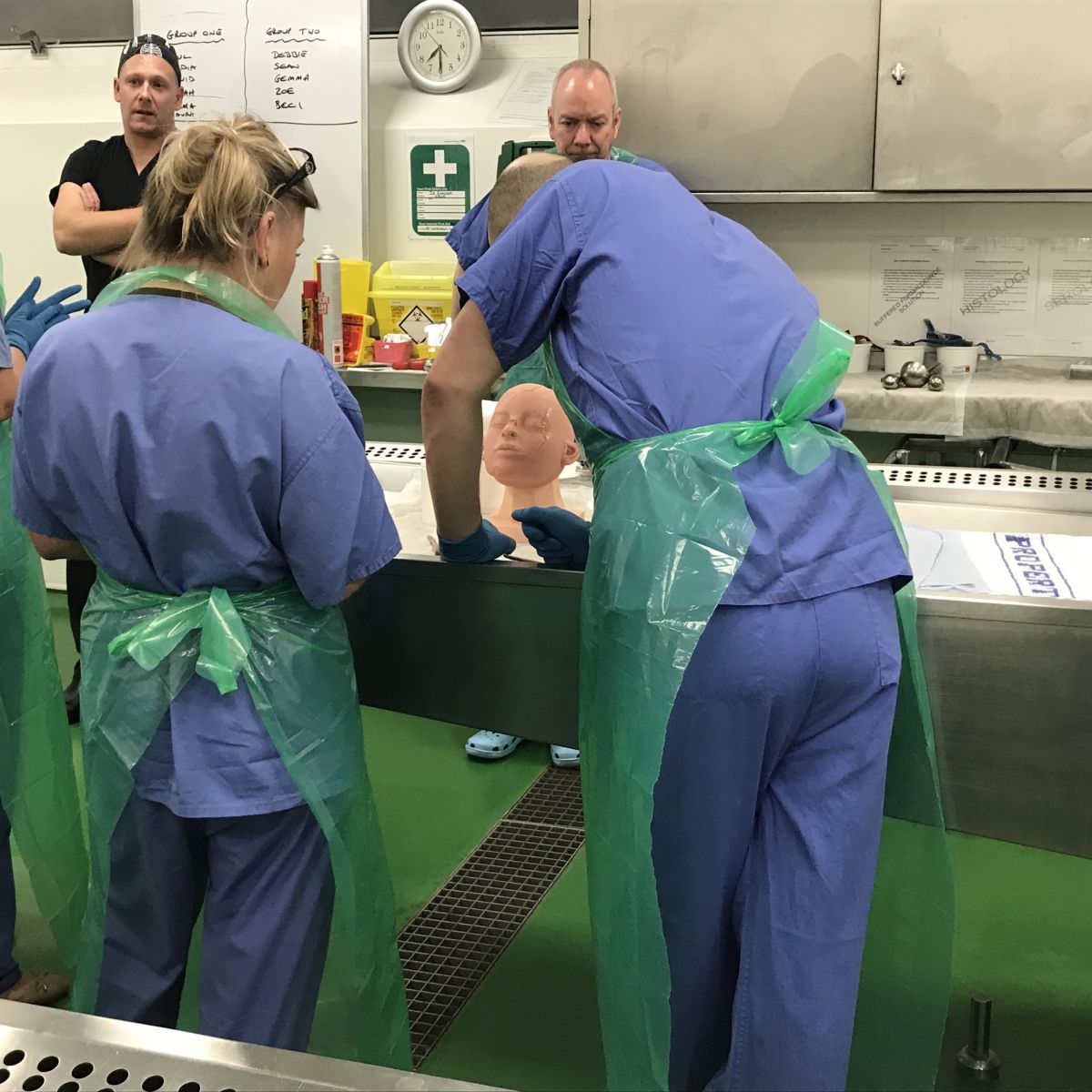News
South East Regional Event 2018- Eastbourne District General Hospital
Gemma Norburn reports on a fascinating regional workshop around reconstruction
Last Friday the 8th June, David King and I rushed out of work at the end of the day from Queens Hospital mortuary in Romford and bundled into my little yellow car. I plugged Eastbourne District General Hospital into Google Maps and off we set on a nearly two hour journey towards the south coast.
We were not in for an evening of fish and chips or seaside fun but for something far more exciting. David and I had the absolute pleasure of attending the AAPT South East Regional Event which was a Suturing and Cosmetic Application workshop.
I wasn’t certain exactly what we had in store for us when we were done travelling. David was snoozing in the passenger seat not long after we hit the Dartford bridge and I was singing along with Magic FM while pondering what we might get up to. I had images of suturing up fruit like oranges or bananas in my head but really I wasn’t sure.
Upon our arrival at the mortuary in Eastbourne we were greeted with friendly smiles, some familiar faces and trays of Subway sandwiches which were very welcome after a two hour drive and having eaten nothing since lunch about six hours previous.
After some time chatting with the other attendees we headed off to change into scrubs and get into the post-mortem room for the workshop.

Ben Whitworth from Dodge was hosting the event and had laid out some of his different products and tools that he uses in his work. There were several sizeable cases of equipment around, and two post-mortem tables with a covered up ‘lump’ in the middle.
We first were shown a slideshow with a few videos and pictures of the products we would be using. In effect, they are a powder and a liquid that are mixed to produce a paste or putty depending on consistency. This can then be used to fill or recreate parts of the body with a spatula or your own hands. In order to keep it pliable and clean, Dry Wash liquid is used and a brush is used to ‘feather’ the substance into the surrounding area and blend it in. Then the powder is applied to the top of the area and the product can set into a latex like texture.
After the presentation we were divided into two groups and each group shown to one of the post-mortem tables. The lumps on the tables were revealed to be lifesize plastic model heads with a series of injuries including missing ear lobes, lips, lacerations to the nose, brow and scalp. We were given some of the product to use and told to have a go at one of the injuries present.
My group looked at each other in the way all groups do when asked to do a task in a workshop and then hesitated about who to go first. My brain goes quite quickly in these situations from ‘No way am I going first’ to ‘Oh go on then’ so I stepped forward. Trying to decide which injury to tackle was difficult because I didn’t want to attempt one that was too ambitious but I also didn’t want to pick a super easy one that wouldn’t be a challenge whatsoever. I settled on a cut of the bridge of the nose that was slightly more difficult in that it went across the face and had some tricky angles.
Mixing the product is harder than it looks, you need quite a lot of powder to make not very much of the pliable substance. I filled the gap carefully with the spatula and looked at what I’d done, there still was a dent in the nose just now a smoothish one compared to a ragged cut.
Ben came over and explained that it could be completed in stages and I could come back to it once the original layer has hardened and apply another one on top. So I stepped back and let the other people in my group complete their injuries while I waited to go back to mine.
While we were working, Ben showed us how to add coloured pigments to the product to match the skin colour closely, so we ended up with pink, yellow and brown patches on our head where we had tried these out. He also showed us how to make a slightly stiffer substance so it could be moulded into shapes like lips and ear lobes. I did go back to my nose and I was pretty pleased with the result in the end!
To round off the talk, we had another presentation from Ben but this time about suturing and the different types. He explained how the Baseball, Wormian and Intradermal sutures work and how they differently close the skin. I had only really seen the baseball stitch before so this was really fascinating to learn about.
I had a great evening at Eastbourne and I cannot recommend attending one of these events more. It’s fun being able to learn new skills and experience these things with other APTs and meet new people too! I can honestly say that APTs are the nicest people I have had the chance to meet in my working life, it’s an honour to be one of you and to meet you all at different events.
